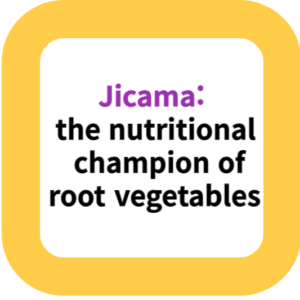lotus root, a culinary treasure that’s bridging the gap between Eastern and Western cuisines.
Welcome to our latest blog post where we delve into the fascinating world of lotus root, a culinary treasure that’s bridging the gap between Eastern and Western cuisines. Once a staple in Asian kitchens, this versatile tuber is now making a remarkable entry into the Western culinary scene.
In this post, we’ll explore the unique texture and sweet, nutty flavor of lotus root, its impressive nutritional profile rich in fiber, vitamin C, and potassium, and its extraordinary antioxidant properties. We’ll also discover the myriad ways this ingredient can be transformed in the kitchen, from traditional Asian dishes to innovative fusion recipes.
Join us as we unravel the secrets of lotus root, an ingredient that’s not only enhancing our meals but also connecting diverse cultures through the universal language of delicious, wholesome food.
lotus root, a culinary treasure that’s bridging the gap between Eastern and Western cuisines.

Introduction: Embracing Lotus Root in Global Cuisine
Lotus root, a staple in Asian cuisine, is not just a mere vegetable but a bridge between diverse culinary worlds.
As it becomes increasingly popular in Western countries, it represents a fusion of eastern traditions and western tastes, offering a unique blend of flavors and textures to the global palate.

Understanding Lotus Root
Lotus root is a tuber that belongs to the lotus plant, often found in the waterlogged areas of Asia. It’s similar in texture to a potato but stands out with its slightly sweet and nutty flavor. This characteristic makes it a versatile ingredient in a variety of dishes, ranging from savory to sweet.
Nutritional Profile
Beyond its taste, the lotus root is a treasure trove of health benefits. It is an excellent source of dietary fiber, aiding in digestion and promoting a healthy gut. Rich in vitamin C, it supports the immune system, while its potassium content helps in maintaining heart health. The lotus root’s nutrient-dense profile makes it a valuable addition to a healthy diet.
Antioxidant Richness
One of the most remarkable attributes of lotus root is its high antioxidant content. These antioxidants are vital in combating oxidative stress and protecting the body from cellular damage. Additionally, they play a significant role in reducing inflammation, potentially aiding in the prevention of chronic diseases.
Culinary Versatility
The culinary applications of lotus root are as diverse as its nutritional benefits. It can be stir-fried, boiled, steamed, or even pickled, making it a favorite among chefs and home cooks alike. Its ability to absorb flavors and maintain a crisp texture makes it a delightful ingredient in both traditional Asian dishes and modern fusion cuisine.
Conclusion: The Rising Popularity of Lotus Root
As lotus root continues to gain popularity in Western countries, it stands as a testament to the growing appreciation of Asian cuisine and its ingredients. Its unique flavor, health benefits, and culinary versatility make it a beloved ingredient in kitchens around the world. Lotus root not only adds diversity to our diets but also brings together different cultures through the shared language of food.






